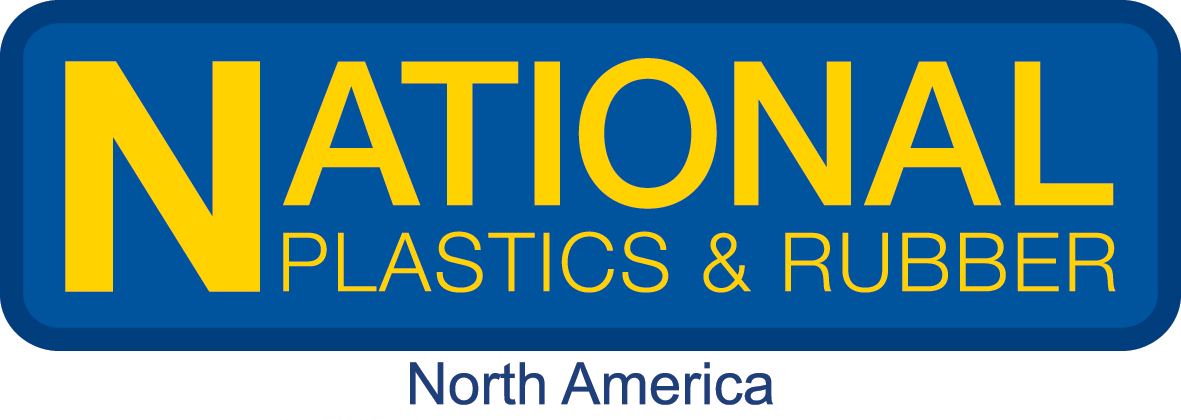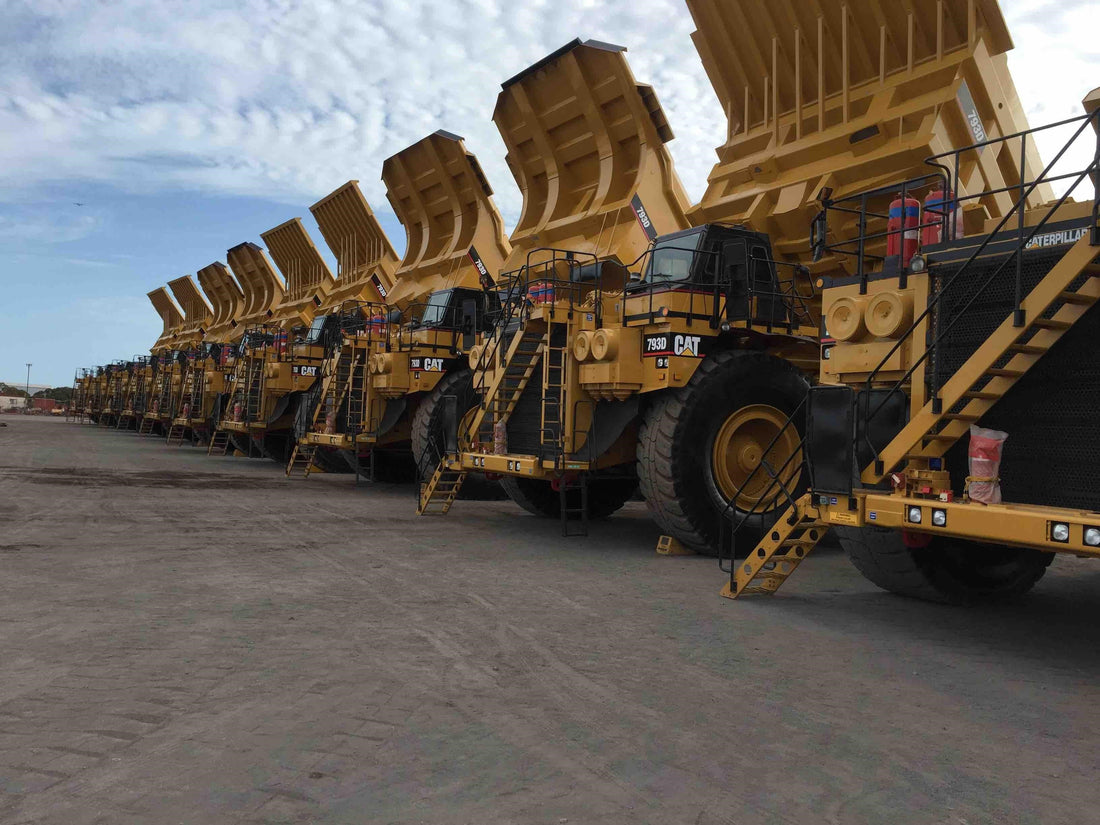National Plastics and Rubber wheel chocks have evolved to meet changing industry demands. An increase in regulation and mine site safety requirements drove the innovation of our range of lightweight wheel chocks. 15 years ago, NPR used to manufacture and supply a heavy range of chocks to national and international mining companies. Due to the desire for companies to embrace safety and an incident free culture – we replaced this range with polyurethane lightweight wheel chocks. Plastic and rubber wheel chocks do not present the same safety features as our innovatively designed wheel stoppers. The aim of our chocks is to directly address the health and safety risks associated with manual lifting on site. Our entire range of wheel chock sizes from light vehicles to even the heaviest of mining trucks (size 7) can be stopped with NPR’s industry-leading wheel chocks.
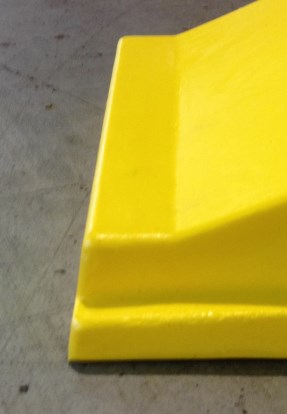 Our chocks feature a unique design unlike any other chock on the market. All wheel chocks in our lightweight range, except size 4/3, incorporate the “toe” design. This design ensures the tire engages with the toe of the chock before it engages with the face of the chock; locking the chock and preventing it from slipping in extreme conditions.
Our chocks feature a unique design unlike any other chock on the market. All wheel chocks in our lightweight range, except size 4/3, incorporate the “toe” design. This design ensures the tire engages with the toe of the chock before it engages with the face of the chock; locking the chock and preventing it from slipping in extreme conditions.
To compliment our wide range of wheel chock products, we have developed a size 4/3 wheel chock. This chock features the angled design of the size 3 on one side and size 4 on the other. We anticipated the different operational areas that chocks will be used across mine sites -from workshops to extreme remote locations. The 4/3 wheel chock was designed for service trucks to take with them when going out to service vehicle breakdowns. Instead of carrying multiple sized chocks, the mechanic will only need to take one chock with them. The chock may appear “double sided”, however you are only required to use one side or the other depending on vehicle and tire size. The chock covers all vehicles that wheel chock size 3 and 4 suit – this is the widest range of commonly used mine trucks.
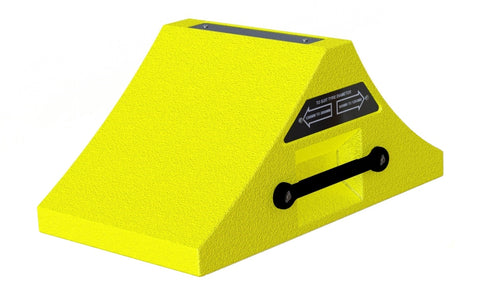
How to use wheel chocks
All company and site specific safety requirements, policies, and procedures must be adhered to. Users are reminded to consider the number of variables that could affect a wheel chock’s performance.
Before using your heavy duty wheel chocks, it is important to check the chock for damage or missing components – like handles or cracks on the face of the chock. If you identify any kind of damage, discard the chock as it will be unsafe for use.
When chocking a vehicle on level ground, whether loaded or unloaded, we recommend using a minimum of two wheel chocks. Place one wheel chock in front, and one behind, of the front tire of the vehicle.
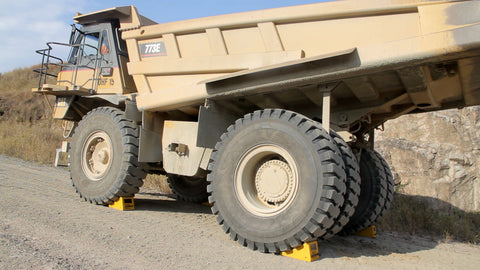
Where a vehicle is parked on a gradient, mine safety authorities have indicated that wheel stoppers are only required to be placed on the downhill side of the tire only. Chocks placed on the uphill side of a tire have no effect on securing, stabilising, or preventing unwanted movement of a large vehicle. If a haul truck is loaded on a gradient, four chocks placed on the downhill side, front and rear tires. When chocking an unloaded vehicle, we recommend using a minimum of two chocks depending on chock size. Place a chock on the downhill side of the left and right side tires on the downhill side of the vehicle.
Importantly, you must always ensure that the chock is fitted square in the centre of the tire.
Only remove a wheel chock it is safe to do so.
What is the Workshop Wheel Chock?
We were recently approached by a large mining company to develop a purpose designed wheel chock product for the workshop environment. The features of our standard range of lightweight wheel chocks are reflective of the harsh conditions chocks face on site, including up to a 10% gradient. This conditions simply do not exist in a workshop environment, therefore altering the product requirements of a workshop chock. NPR’s award-winning workshop wheel chock features a unique design with wheels and handles to easily manoeuvre the chock around the workshop – reducing manual handling risks and eliminating the need to go under the footprint of the truck. Tilt the chock onto its back wheels to push chock to vehicle – when you get to the vehicle simply tip onto front wheel and use handles to help position chock square against the tire. Watch our instructional video.
